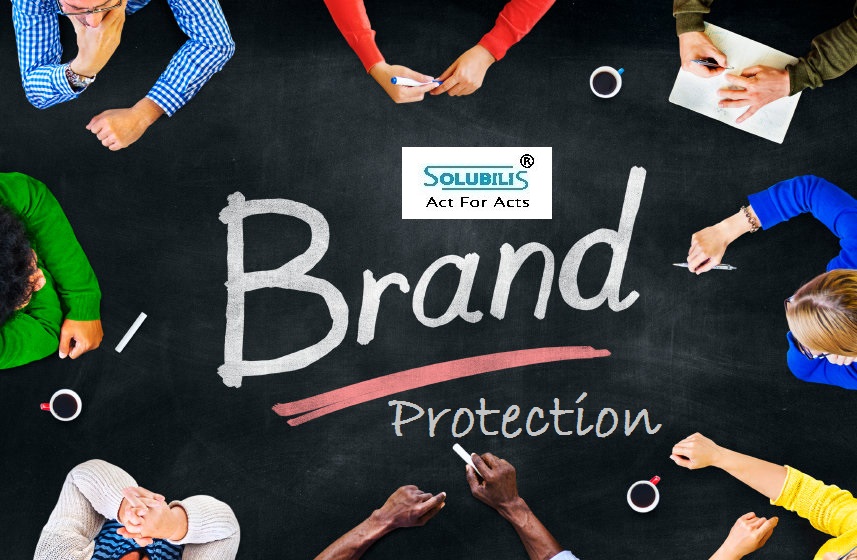Brand Logo Protection – Trademark Registration in Cochin
Brand Logos
Typically, logos and designs that are used as brand identities for representing businesses are protected as trademarks. Brand Logos are original artistic works of one particular person that have an element of creativity, they are also protected as copyrights. Trademarks and copyrights are two different forms of intellectual properties and are protected by different laws; and the scope of protection under different laws is different too. In this article, the thin line between the protection afforded to brand logos and designs under the two regimes has been discussed. But discussing the same, it is important to first look at the meanings of trademark and copyright.
A copyright is a combination of several intellectual rights granted to the owners of specific creative artistic works. In a nutshell, a copyright could be explained as an exclusive legal right to do or authorize another person to use, reproduce and distribute copies of and / or make adaptations or translations of and / or perform or communicate in public certain kinds of creative works.
A trademark is a mark capable of being represented graphically and which is capable of distinguishing the goods or services of one person from that of another when used in trade.
A brand logos or a trademark registration represents the origin, quality and the goodwill attached to a business among the customers. It could be anything with the help of which consumers identify a business or a brand. The trademark is broader than copyright in as much as anything with which a business or its commercial offerings could be associated would be considered a brand identity. Only requirement of being a brand identity is – it should be or become distinctive, and not be generic in relation to the business for which it is used.
While every business entity aims for gaining recognition and put in ample amount of time, effort and creativity to design its business identities and logos that are attractive, not all logos might be unique or original. Brand identities could well represent businesses owing to their distinctiveness and association with their owners, but may not have minimum standards of creativity or qualify to be original. However, the same might not qualify for copyright protection due to lack of artistic character. Similarly, the use of a specific colour or combination of colours could give rise to a strong brand identity, but it might not be copyrightable.
Only some kinds of creative artistic works are capable of copyright protection, artistic works (including brand logos or designs) being one such kind. If a brand logo has an element of creativity and is original, it will also attract copyright protection in addition to trademark protection through Trademark registration in Cochin .
Summarizing the above, the main requirement for a brand logo to be protected under the trademark law is that it should be distinctive and capable of representing a trade in market.
Scope of Brand Logo protection
When a logo’s artistic work qualifies for copyright protection, its unauthorized storage, reproduction, distribution and use are prevented in any kind of other creative works. Such creative works might or might not be used for commercialization. On the other hand, a logo that is intended to be (and eventually becomes) an important brand identity associated with the business, could be prevented from unauthorized use by others in relation to same or similar goods or services straight-away; and in case of a well-known brand, in relation to any other kinds of commercial products or services or activities also. A logo used or intended to be used in commerce is recognized and protected as trademark through Trademark registration, which is a stronger form of protection considering trade-related aspects.

Copyright protection in a way seems wider, as it prevents misuse in all forms except those which are covered under fair dealings, as compared to protection as a trademark, which prevents misuse on products and/or services, i.e., commercial offerings. However, copyright protection has its limitations in that anyone coming up with something original, even if it is similar to a prior copyrighted work, may be entitled to his own copyright. This certainly will prevent the prior owner of the initial copyright from preventing use of the later copyright. Therefore, though copyright provides broader recognition in the sense that any form of copying is prohibited, the trademark registration strongly protects the trade-related aspect of a logo, in that anything similar can be prevented from use, even if it is an original work.
Conflict check procedure
In India, prior to registration of an artistic work that is also capable of being used as a trademark, the trademark registrar is approached for certification that there are no trademarks on record that resemble the copyrightable artistic work. Only once it is confirmed and certified by the trademark registrar that there are no same or similar trademarks on record, the artistic work copyright could be filed for registration. Similarly, a trademark is not registrable if it is in conflict with a copyrighted work.
While trademark and copyright registration in India give consideration to the conflicts that may arise under each other, it is noteworthy that as of now, there is no actual procedure either prescribed under the trademark law or followed by trademark authorities in India to scrutinize the copyright records while examining trademark applications.
Even if the copyright records are scrutinized by the trademark authorities, it is not possible to keep a track of prior unregistered copyrights in artistic works that may accrue in original works as soon as they come in existence. This implies that on the basis of prior copyright over artistic logos, there is practically little means to prevent subsequent identical or similar trademark logos from getting registered in favour of others, should the copyright owner lapse to keep vigilance on future trademarks applied for Trademark registration.
Moral rights and public interests
It is interesting to note that there is a social versus economic aspect of protection under both laws. Copyrights are means to reward the efforts and creativity and protect the moral rights of the authors and creators. The author’s moral rights are not alienated and are taken into account even when the commercial rights are transferred.
On the other hand, a trademark logo serves business identification and garners goodwill that is an important intangible asset of a business and is dependent on the recognition of its brand by public at large. A trademark also aims to prevent confusion, which could be caused to public at large, between two trade sources. Thus, protection of logos under trademark registration directly serves public interests in addition to being business tools for their owners.
Enforcement of rights in cases of violations
In India, both copyrights and trademark rights can accrue without actual registration and remedies are available to the owners of unregistered copyrights and trademarks.
On the criminal side, similar sanctions come in play in cases of copyright and trademark violations. Copyright infringement or abetment thereof in respect of a logo with knowledge is an offence punishable under copyright law.Similarly, under the trademark law in India, remedies are available against applying false trademark with intent to defraud. Under both laws, such offences are punishable with imprisonment up to three years’ term and with fine up to two lakh rupees.
Nevertheless, on the civil side, while an artistic logo’s owner could initiate an action of infringement of his copyright in the logo even without registration, there can be no action for infringement of an unregistered brand logo. Passing off actions against misuse of a reputed, well-known logo could certainly be initiated if the logo is unregistered or registered. An action of passing off is a common law remedy available to all traders, who have generated reputation and goodwill in relation to their business, against unlawful use of their trade names and trademarks in the course of trade.
It is also noteworthy to point that, both trademark registration and copyright registration consider registration of logo as prima facie proofs of ownership in any kind of enforcement action.
Legal aspects
It is commonly known that intellectual property protections are jurisdiction specific, which means, if copyright or trademark right is secured in relation to a work in one country, it would be applicable only in such country, and not elsewhere. However, there is a slight difference in the way international IP conventions govern international protection of trademarks and copyrights.

In case of a trademark, one is required to seek registration in each jurisdiction either by filing individual applications under the Paris Convention or by filing for an International Trademark Registration under the Madrid system. So, if one wishes to protect their brand logo as a trademark in various jurisdictions, they would be required to seek protection in each jurisdiction independently. Protection in multiple jurisdictions will not be automatic.
On the other hand, if an artistic brand logo is protected as a copyrighted work in a country that is a member of the Berne Convention, it will be protected in other member countries of the Convention. It is because copyright, if afforded in one member of the Convention, extends to all the other members automatically. Having said that, protection in non-members will be required individually, like how it is done for trademarks.
There is another jurisdictional aspect to consider for protection under both laws. As discussed earlier, both copyright and trademark laws in India give consideration to conflicts that may arise under each other while affording protection to logos. However, this may not be the case in all foreign jurisdictions, which would have different sets of rules and procedures under both their laws and might not have sufficient scrutinizing mechanism for ascertaining prior copyright, registered or unregistered, over an identical or similar logo during a trademark’s office action and vice versa.
Term of existence of copyrights and trademark rights
There is no limited term of existence or validity of protection for a right in a trademark. A Trademark registration is valid for a period of ten years and requires renewal every ten years post that. So, the life of a trademark right in a logo could be perpetual, if the owner is interested in maintaining it. However, copyright in a logo would last for only for sixty years (in India) from the year following the year of its author’s death.
Also, the term of copyright is different for different jurisdictions and in certain jurisdictions, different based on entities owning copyright. But throughout the world, it is well-settled that trademark rights can last for perpetuity.
End Notes
It is worth mentioning that a representation or an identity of a brand is a commercial tool for any business, therefore, a trademark. The only requirements for an identity to qualify as a brand identity are that it should be capable of graphical representation, shouldn’t be generic or descriptive and should not conflict with prior trademarks. Not only does this allow a business owner to seek statutory protection of his identities of varied nature, they are protected as such in perpetuity. If a brand logo has original creative and artistic characteristics, the same attracts copyright protection and could be registered as an artistic work; and in such event, remedies under copyright law could be sought for in cases of enforcement. Registration is of high evidentiary value in both, trademark and copyright enforcement actions.
An ideal strategy for any business owner, thus, would be to seek protection of their unique brand logos under both the laws and obtain statutory trademark registration in Cochin as well as copyrights in relation to the same.
